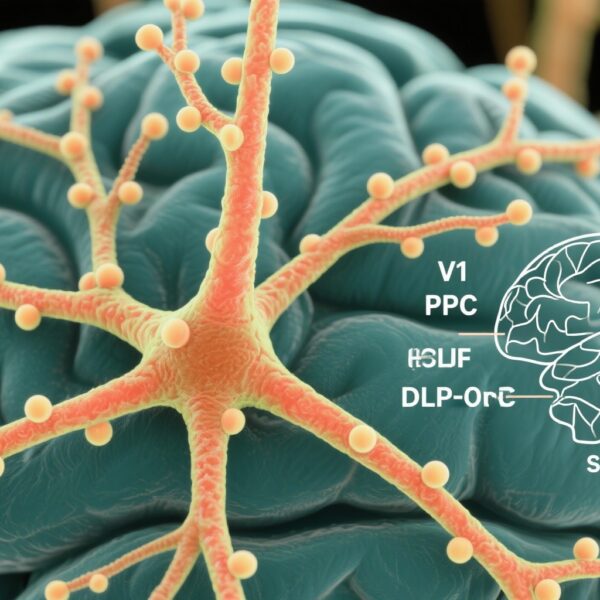Introduction
Pediatric kidney transplantation offers a life-saving option for children with end-stage renal disease. However, the success of transplantation is tempered by infectious risks, notably Epstein-Barr virus (EBV) transmission from donor to recipient. EBV is a herpesvirus associated with posttransplant lymphoproliferative disorder (PTLD), a potentially fatal complication characterized by uncontrolled lymphoid proliferation. Understanding donor-derived EBV infection, its epidemiology, monitoring, and preventive strategies is vital to improving outcomes in this vulnerable population.
Background and Clinical Significance
EBV seronegativity is common among pediatric transplant candidates, with roughly 40-50% of children being EBV-seronegative, compared to less than 10% of adults. Transplantation involving organs from EBV-seropositive donors to EBV-seronegative recipients (D+/R−) significantly elevates the risk of primary EBV infection posttransplant. This situation heightens the risk of PTLD, which occurs in an estimated 7-15% of pediatric D+/R− recipients, a substantial burden considering the severity of PTLD.
Current management strategies include pretransplant serostatus assessment, vigilant posttransplant EBV monitoring, and immunosuppressive regimen adjustment. Yet, uncertainties remain regarding the optimal monitoring frequency, timing, and interventions to effectively prevent PTLD.
Study Design and Methodologies
Recent research has employed retrospective cohort studies, utilizing electronic health records and blood sample analyses to evaluate EBV infection dynamics posttransplant. Key metrics include the incidence and timing of EBV DNAemia, its association with donor and recipient serostatus, and clinical outcomes including PTLD development and graft survival.
One pivotal study analyzed 257 EBV D+/R− recipients across multiple organ types, assessing EBV DNAemia presence and timing within a year after transplant. It explored associations with recipient age, donor age, and immunosuppressive therapies. Simultaneously, another study examined a more extensive cohort of adult-only recipients, contrasting their PTLD risk based on serostatus and induction therapies, providing a broader understanding of risk stratification.
Key Findings and Clinical Implications
The studies converge on several critical points:
– Nearly 50% of pediatric D+/R− recipients develop donor-acquired EBV DNAemia within the first year, most frequently between 2 to 6 months posttransplant.
– The incidence of PTLD in this high-risk group varies from approximately 13.7% to 22%, often occurring around 6 to 12 months after transplantation.
– EBV DNAemia is less common in children less than 6 months old, possibly owing to passive maternal antibody or differences in immune response.
– Organ-specific variations exist, with the highest EBV DNAemia incidence in liver transplants and the lowest in heart transplants, likely reflecting differences in immunosuppressive protocols and organ immunogenicity.
– Pretransplant serostatus remains a strong predictor of posttransplant EBV infection and PTLD development. D+/R− status notably increases PTLD risk, with hazard ratios indicating a 5- to 10-fold higher incidence compared to seropositive states.
These findings advocate for tailored EBV monitoring protocols. Specifically, focused surveillance during months 2-6 post-transplant appears optimal. For very young children (<6 months) and certain donor-recipient age combinations (<12 months), less frequent or delayed monitoring may be justified, given the lower observed DNAemia incidence.
Moreover, strategies to prevent primary EBV infection, such as choosing EBV-seronegative donors when possible and minimizing immunosuppression, could mitigate PTLD risk. The use of current antiviral therapies remains limited, emphasizing the importance of early detection and preemptive interventions like rituximab.
Expert Commentary and Future Directions
Experts underscore the importance of integrating donor and recipient serostatus in transplant planning. Advances in quantitative EBV PCR assays enable early detection of viral reactivation, but optimal thresholds for intervention are still under debate.
Challenges remain, such as understanding why some EBV seronegative recipients do not develop DNAemia or PTLD despite D+/R− status. Biological mechanisms may involve passive maternal antibodies, innate immune responses, or genetic factors.
Future research should prioritize prospective studies with standardized monitoring schedules, and randomized trials evaluating prophylactic or preemptive therapies. Additionally, exploring novel immunotherapeutics that selectively target EBV-infected cells can offer pathways to reduce PTLD without excessive immunosuppression.
Conclusion
The risk of donor-derived EBV infection and subsequent PTLD in pediatric kidney transplant recipients is significant. Focused monitoring during the first 6 months posttransplant, especially in high-risk D+/R− recipients, is essential for early detection and intervention. Collaboration between transplant centers to standardize protocols, combined with ongoing research into immune mechanisms and therapeutics, will be key to improving patient outcomes and minimizing the burden of EBV-related complications in pediatric transplantation.
Reference
Potluri VS, Amaral S, Puttarajappa CM, Zhang S, Devine KJ, Reese PP, Sonnenberg EM. Donor-Derived Epstein-Barr Virus Infection Among Pediatric Kidney Transplant Recipients. JAMA. 2025 Sep 17:e2514067. doi: 10.1001/jama.2025.14067. Epub ahead of print. PMID: 40960821; PMCID: PMC12444639.
Burton C, Mabilangan C, Preiksaitis J. Incidence and Timing of Epstein-Barr Virus Whole Blood DNAemia in Epstein-Barr Virus-Mismatched Adult and Pediatric Solid Organ Transplant Recipients. Transpl Infect Dis. 2025 Jul-Aug;27(4):e70042. doi: 10.1111/tid.70042. Epub 2025 Apr 29. PMID: 40298363
Potluri VS, Zhang S, Schaubel DE, Shaikhouni S, Blumberg EA, Nasta SD, Bloom RD, Cruz-Peralta M, Mehta RB, Lavu NR, Getachew B, Tandukar S, Reese PP, Puttarajappa CM. The Association of Epstein-Barr Virus Donor and Recipient Serostatus With Outcomes After Kidney Transplantation : A Retrospective Cohort Study. Ann Intern Med. 2025 Feb;178(2):157-166. doi: 10.7326/ANNALS-24-00165. Epub 2025 Jan 28. PMID: 39869913; PMCID: PMC12238997.
Ludvigsen LUP, Åsberg A, Spetalen S, Sørensen MD, Hamilton-Dutoit S, Gramkow AM, Christiansen CF, Kro GB, Thomsen MK, Ulrichsen SP, Pedersen RM, Holte H, Thiesson HC, Bjerre A, D’Amore F, Dahle DO, Jespersen B, Jensen-Fangel S, Reisæter AV. Risk and prognosis of posttransplant lymphoproliferative disease in Epstein-Barr virus-seronegative kidney transplant recipients – an observational cohort study from Norway and western Denmark. Am J Transplant. 2025 Jul;25(7):1547-1560. doi: 10.1016/j.ajt.2025.01.035. Epub 2025 Jan 28. PMID: 39884653.



